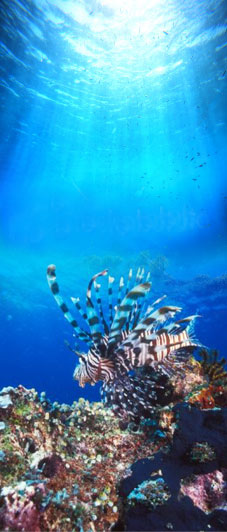Aquariums as a Teaching Tool
Drs. Foster & Smith Educational Staff
The appeal of aquariums has broadened to a greater cross section of people, moving beyond the realm of a basement hobby. Both beautiful and relaxing, more and more aquariums are found in offices, in restaurants, and proudly showcased as part of home décor.
But did you know aquariums are also an excellent hands-on teaching tool in the classroom or at home? Establishing an aquarium offers students of all ages the opportunity to learn directly through experience. Caring for the aquarium kindles a sense of responsibility, achievement, and a genuine desire to learn. Teachers and parents are given a unique opportunity to teach a receptive audience in a fun and interactive manner.
Consider setting up a special "teaching aquarium" in a classroom or home to help encourage and develop an interest in reading, writing, critical thinking, and science.
Educational Benefits of Aquariums
Reading
Reading is an essential part of our everyday lives. Students will enjoy researching topics such as fish species, plants, or reefs to learn more about aquarium keeping. Who has not heard of the "selective" reading habits of children who only read books on topics of interest to them? The wide variety of aquarium-related topics can help foster good reading habits in children who may not otherwise be interested in reading.
Writing
Students can be asked to write reports or daily journal entries about the classroom aquarium. Students can also write letters to fish or aquatic experts with their questions. Both are great ways to help sharpen grammar and writing skills.
Developing Critical Thinking and
Problem-solving Skills
Students collect data from an aquarium by measuring and recording water temperature, pH, ammonia, and nitrate levels. Chart or graph the information and look for trends that coincide with events in the aquarium. Any event, even the loss of a fish, is an opportunity to discuss possible causes and their effects, preventions, and ways to improve existing conditions. The teaching and learning opportunities are endless.
Science
Biology, chemistry, ecology, and physics are just a few of the sciences involved in aquarium keeping. A classroom aquarium can be used to teach students about specific topics such as fish anatomy or more complex topics such as the food chain, the water cycle, or the nitrogen cycle.
Bringing Children and Parents Together
An aquarium is a fun, educational tool that parents and children can enjoy together. Students not only develop learning skills but because they get excited about their aquarium, are eager to share what they learned with family members and friends. Involved parents are more likely to participate in other school activities with their child.
Setting up a teaching aquarium is a great way for students of all ages to learn about a variety of topics and gain valuable life lessons. However, the decision to set up an aquarium should never be done on a whim. Carefully evaluate the amount of time, effort, and finances you will be able to commit to the aquarium and its inhabitants. Patience and proper research are key to a successful aquarium.



